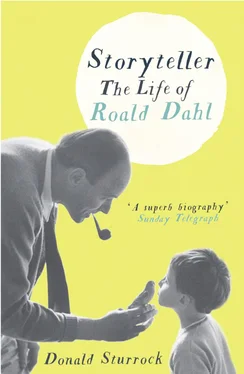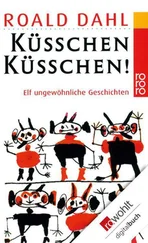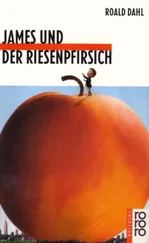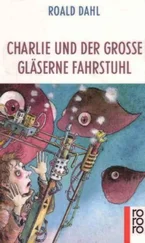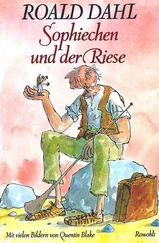Early twenty-first-century Sarpsborg is a grim place. Gray and ugly, it is dominated by a sullen 1960s concrete and steel shopping centre, which crouches next to the mournful remains of the nineteenth-century town. The outskirts are relentlessly, oppressively industrial. It is a far cry from the ancient splendours of Trondheim, the civilized serenity of Oslo, or the picturesque fjords and fishing villages of the western coast. On a dull Saturday afternoon in November, drunken and overweight supporters of Sparta, the ailing local football team, stagger from bar to bar. The occasional raucous cheer suggests an attempt at rowdiness. But one senses their hearts are not quite in it. Depression stalks the streets. In quiet corners, solitary older inhabitants drink furtively, seeking out the darkest corners of gloomy cafés in which to hide. Others huddle in groups, saying nothing. No trace remains of the butcher’s shop where Olaus plied his trade, or of the house in Droningensgade where he raised his family and where he lived with his servant Annette and his assistant Lars Nilssen. Like so many other older Sarpsborg buildings, they have long since been destroyed.
When Olaus died in 1923 at the age of eighty-nine, Roald was only six. It is not clear that he ever met him, although in Boy he confidently describes his paternal grandfather as “an amiable giant almost seven foot tall”. 18Some of the other detail he gives about the man is entirely fictitious. For example, he claimed that Olaus was born in 1820, some fourteen years earlier than he actually was. Perhaps he confused him with his great-grandfather Hesselberg, the son of the pastor from Grue, who was indeed born that year. Perhaps not. Yet this lack of concern for detail blinded him to one unexpected anomaly of his own family history. Olaus and his wife Ellen had six children: three sons and three daughters over a period of thirteen years. Harald was born in 1863, Clara in 1865, Ragna in 1868, Oscar in 1870, Olga in 1873, and finally Truls in 1876. 19Examining the local baptism and marriage records, however, reveals a surprising and perhaps significant detail: Roald’s father was illegitimate. Harald was born in December 1863, but his parents did not actually marry until the following summer. He was christened on June 26, 1864, when he was six months old, and just five days after his parents’ wedding. Whether Harald was aware that he was born a bastard is unclear, but in a small community like Sarpsborg, it was unlikely that fact would have been kept a secret from him for long, and the associated stigma may well have fuelled his desire to start a new life elsewhere.
Harald undoubtedly had a hard childhood. In Boy, Roald tells the gruesome story of how, aged fourteen, his father fell off the roof of the family home, where he was repairing loose tiles, and broke his arm. A drunken doctor then misdiagnosed a dislocated shoulder, summoning two men off the street to help him put the shoulder into place. As they forcibly manipulated young Harald’s arm, splinters of bone started to poke through the boy’s skin. Eventually the arm had to be amputated at the elbow. Dahl tells the tale with his usual lack of sentiment, explaining how his father made light of his disability — sharpening a prong of his fork so he could eat one-handed, and learning to do almost everything he wanted, except cutting the top off a hard-boiled egg, with a single hand. It’s a good tale. Suspiciously good. So it is not surprising to discover that Roald confessed to one of his American editors, Stephen Roxburgh at Farrar, Straus & Giroux, that he had invented much of it and that he had particularly enjoyed devising the detail of the sharpened fork. 20Photographs confirm that his father’s arm was certainly amputated. But it’s also possible that Dahl’s version of the accident hid a more squalid domestic truth and that it was a drunken parent rather than a drunken doctor who was responsible for the amputation. We don’t know if Harald was a fabricator of the truth — his wife certainly was, and she was the one who passed the family legends down to Roald — but he was studious, thoughtful, and had a passion for beautiful things. He had little in common with his father: the obstinate and rough-hewn butcher, who squandered his money betting on local trotting races. 21
Harald and his brother Oscar must have elected to leave Norway some time in the 1880s. Writing a hundred years later, Roald describes the decision in characteristically simple terms:
My father was a year or so older than his brother Oscar, but they were exceptionally close and soon after they left school they went for a long walk together to plan their future. They decided that a small town like Sarpsborg in a small country like Norway was no place to make a fortune. So what they must do, they agreed, was to go away to one of the big countries, either to England or France, where opportunities to make good would be boundless. 22
Both went to Paris, but their motivations for leaving were almost certainly more complex than Roald made out. To begin with, the two brothers were nothing like the same age. There was a seven-year gap between them. So, even if Oscar had just left school when he departed for France, Harald would have been a young man in his twenties. The fact that Roald also maintained his grandfather “forbade” his two sons to leave and that the two men were forced to “run away” 23suggests it took a while for the slow-burning Harald to pluck up the courage and defy him. Two more of Olaus and Ellen’s children also left Norway at this time: Clara went to South Africa and Olga to Denmark. Only Ragna and her youngest brother, Truls, stayed behind. Truls became his father’s apprentice and eventually took over the butcher’s shop, staying with him, one suspects, largely for business reasons.
The two older Dahl brothers left Norway on a boat. It’s quite possible they worked on ships for a considerable period of time before they ended up in Paris, for both of them later went into careers that involved quite detailed knowledge of shipping. What exactly they did when they got to the French capital remains unclear. Family legend has it that they went there to be both artists and entrepreneurs — an improbable combination of skills perhaps, but one that would define Roald, in whose mind there was always a natural link between making art and making money. It was the same with his elder sister Alfhild. Sitting in the garden of her house in the Chiltern Hills, a stone’s throw away from where her brother lived, her weathered features broke into a wrinkly grin as she recalled her father and uncle, seventy years earlier. “They left Norway to become artists, you see,” she told me. “They went to make their fortune. They just assumed they could do it.” 24It was as if her brother were speaking. The crackly voice, the clipped, matter-of fact delivery, the wry chuckle.
The big picture, too, is similarly vivid and compelling, always uncluttered with qualifications or a surfeit of detail. For Alfhild, Harald and Oscar were typical Nordic bohemians, who came to Paris for its glamour, its freedom, and its artistic energy. Fictionalized versions of these Scandinavian visitors appear in literature of that period — Oswald in Ibsen’s Ghosts, for example, or Louise Strandberg in Victoria Benedictsson’s play The Enchantment. They left the stern world of the North for a “great, free glorious life” 25among the boulevards and cafes, where geniuses mixed cheek-by-jowl with the indigent, where anarchists plotted social revolution, and where painting was in a ferment of change that had not been seen in one place since Renaissance Florence.
Fading sepia photographs give us a glimpse of the lost world they lived in: days at the races, fancy-dress parties, lunches on summer lawns in Compiegne and Neuilly. And then they painted. It was the golden age of Norwegian painting, and in Paris Harald would almost certainly have mixed with the leading Scandinavian painters of the day, including Edvard Munch and Frits Thaulow. Not that Harald was a modernist. He was a craftsman, who carved mirrors, picture frames and mantelpieces, and painted rural scenes. A few examples of his work survive — subtle, well-crafted landscapes in the Scandinavian naturalistic style. At Gipsy House, one of them, an impressionistic pastel in green, blue and brown, still hangs by Liccy Dahl’s bedside. It is reminiscent of the dismal rural setting from which Harald’s father had fled. A clump of straggly spruces tremble by the side of a placid lake, like a skeletal family tentatively approaching the chilly waters. No sunlight illuminates the scene, nor is there any sense of human habitation. In the foreground, reeds are tugged by a gust of wind. In the background, the bare mountains rise up into the haze toward the distant sky.
Читать дальше
